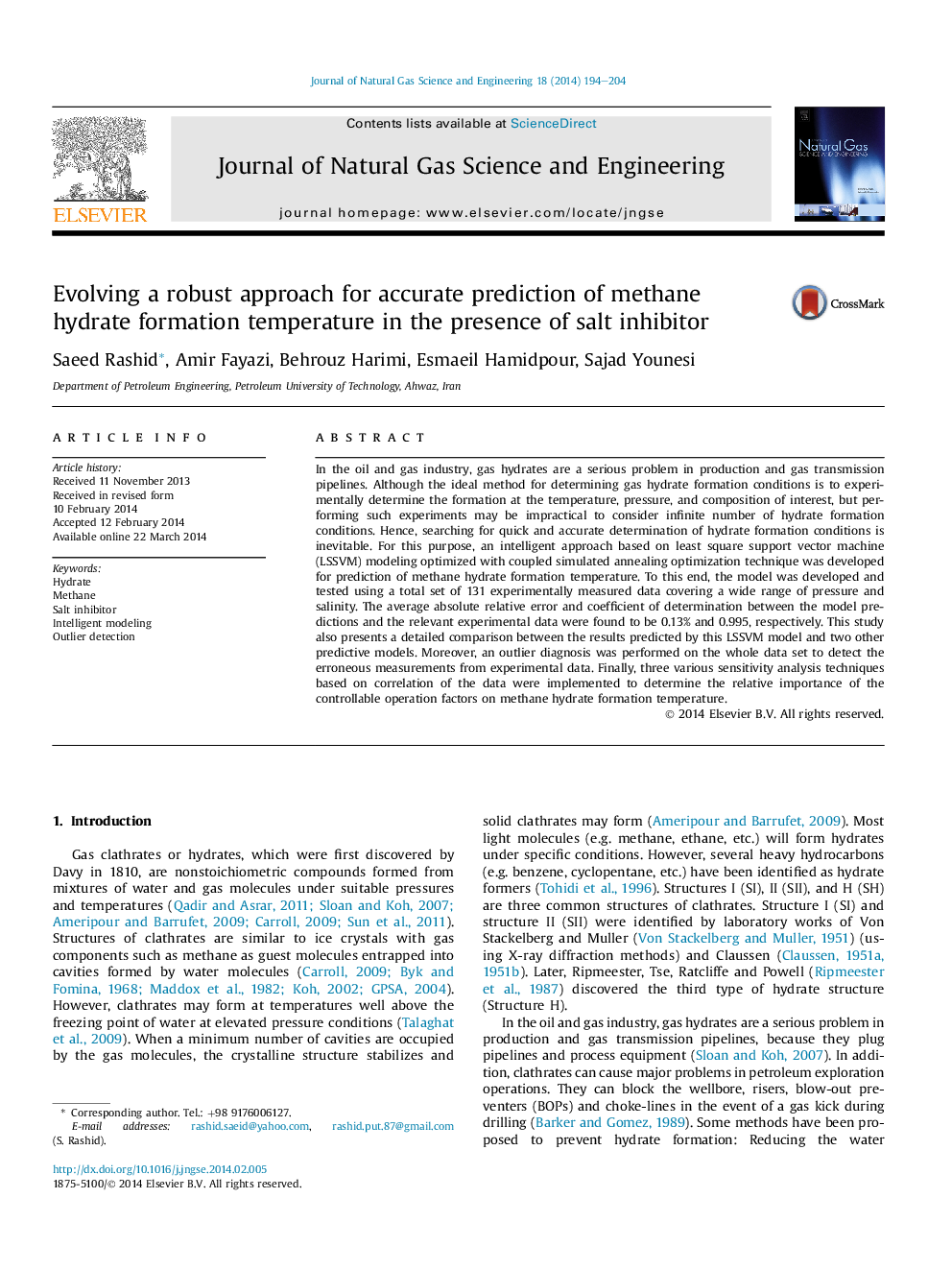| کد مقاله | کد نشریه | سال انتشار | مقاله انگلیسی | نسخه تمام متن |
|---|---|---|---|---|
| 1757929 | 1523022 | 2014 | 11 صفحه PDF | دانلود رایگان |
• A model for prediction of methane hydrate formation temperature is introduced.
• Error analyses are carried out between developed model and two other models.
• An outlier diagnosis is performed to detect the erroneous measurements.
• Three various sensitivity analysis techniques are implemented.
In the oil and gas industry, gas hydrates are a serious problem in production and gas transmission pipelines. Although the ideal method for determining gas hydrate formation conditions is to experimentally determine the formation at the temperature, pressure, and composition of interest, but performing such experiments may be impractical to consider infinite number of hydrate formation conditions. Hence, searching for quick and accurate determination of hydrate formation conditions is inevitable. For this purpose, an intelligent approach based on least square support vector machine (LSSVM) modeling optimized with coupled simulated annealing optimization technique was developed for prediction of methane hydrate formation temperature. To this end, the model was developed and tested using a total set of 131 experimentally measured data covering a wide range of pressure and salinity. The average absolute relative error and coefficient of determination between the model predictions and the relevant experimental data were found to be 0.13% and 0.995, respectively. This study also presents a detailed comparison between the results predicted by this LSSVM model and two other predictive models. Moreover, an outlier diagnosis was performed on the whole data set to detect the erroneous measurements from experimental data. Finally, three various sensitivity analysis techniques based on correlation of the data were implemented to determine the relative importance of the controllable operation factors on methane hydrate formation temperature.
Journal: Journal of Natural Gas Science and Engineering - Volume 18, May 2014, Pages 194–204
